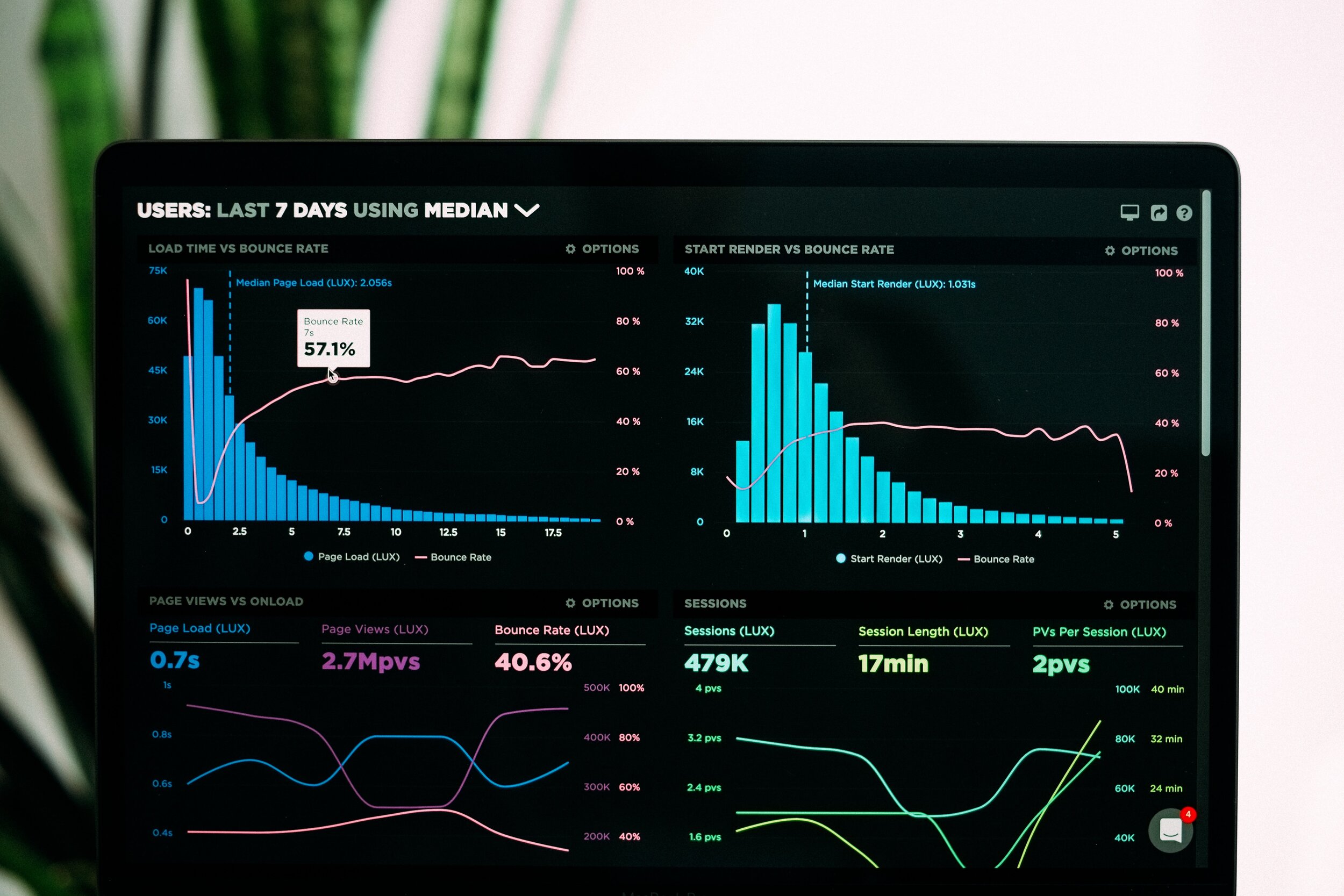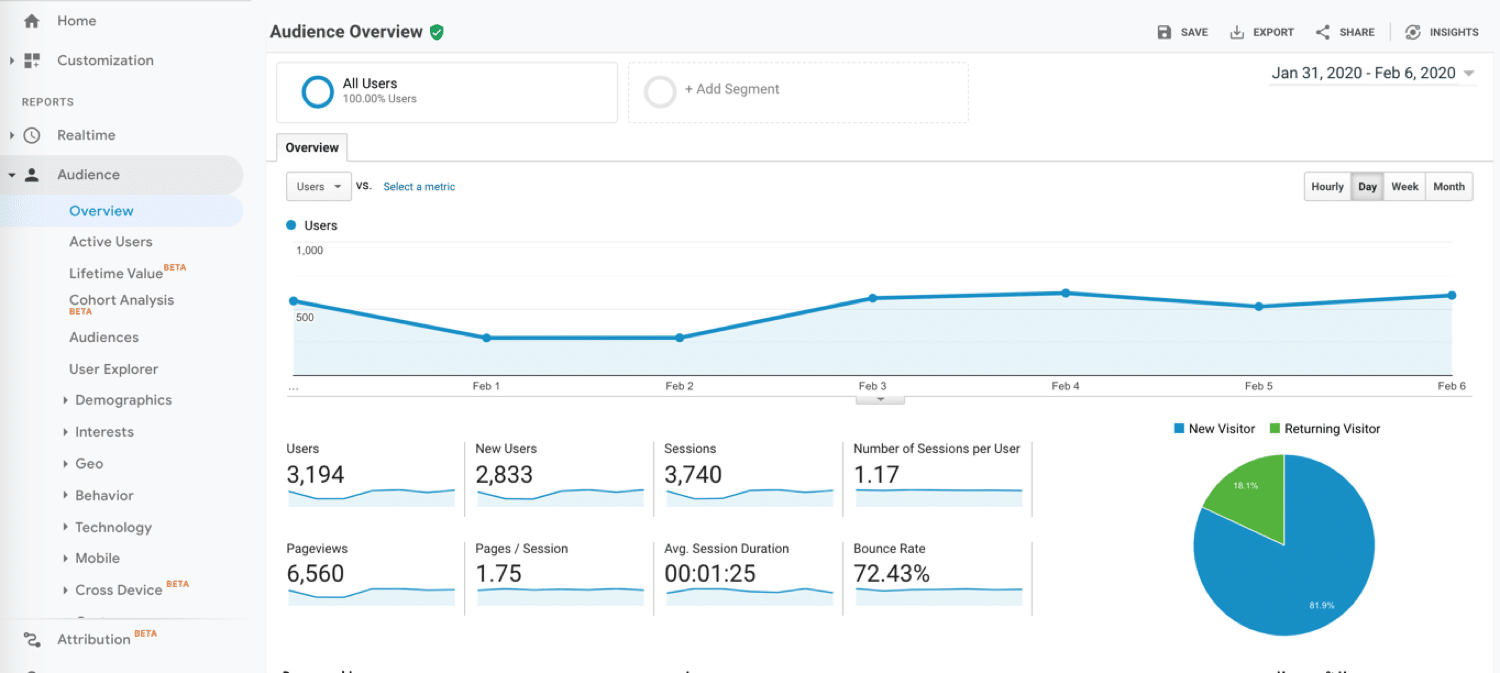
Why your website analytics matter
26 April 2021 · 4 min read

Chelcie Plowright
Managing Director & Brand Strategist
Why your website analytics matter
26 April 2021 · 4 min read
Getting to the bottom of your analytics
Analytics should be at the forefront of the decision-making process for your online business. However, I’m noticing that many of my clients are clueless about the core data that describes their business.
I had a client who wanted to improve website performance, so I asked the following questions:
1. How many people are visiting your site?
2. Where do they come from?
3. What’s the most popular content?
4. And what device are they using?
Their response? Crickets.
You see analytics give us a huge amount of insight into:
· WHO your customers are and how they find you
· WHEN they’re looking for your services
· WHAT they’re reading and interested
· WHY you may not be making a conversion or sale
Without accessing this data, you’re driving blind. So we’ve created a blogpost to help you get understand your analytics and get more insight into how your website is performing.
How to find your website analytics
The first step is to find your website analytics and it’s easier than you’d think. Most website management software offers analytics that you can view for free. You may need to talk with your webmaster to figure out how to access the data. If you’d like help on setting this up and getting access; please contact us as we would be happy to help.

Alternatively, use Google Analytics – a free and trusted platform that gives you a complete overview of how your website is performing. It will also connect the data to Google’s other services. Furthermore, the Google Search Console is a great free tool that helps you monitor website performance and troubleshoot problems.
You can also invest in a website analytics service that will provide a suite of modern features – all play a role in helping you understand and improve website performance. Some of these features include data visualisation, mobile access, data exploration, forecasting, analysis, customisable dashboards, site overlay and much more.
What to do with your analytics
Analytics can be a bottomless pit of data that needs to be utilised for improved website performance. You have a few options available for who should be responsible for harnessing that data:
· Do it yourself: Short on funds but have a lot of time on your hands? Then consider digging into training material and figuring out how to use website analytics to your advantage. Investing in knowledge is worthwhile even if you plan on hiring a service in the future. You’ll be better equipped to assess the work of SEO specialists when you understand the fundamentals.
· Marketing agency: If you are hiring a marketing agency for your campaigns, then ask if they also perform website analytics services. Usually, the extra cost of adding analytics to their plate is not significant.
· SEO specialists: For a dedicated team that will laser focus on your analytics data, SEO specialists are the best choice. They can help you implement a strategy for boosting your website performance across the board.
The biggest brands in the world spend huge budgets on analytics. That’s because even the smallest insights can lead to significant ROI increases. Invest in understanding the data and you’ll reap the rewards.
Making marketing decisions based on your analytics
Analytics is a scalable and reliable tool for making decisions based on data rather than your gut-feeling. Don’t get me wrong, there is something to be said for gut-feeling – it can lead to some of the best results you’ll have. However, data should be the source of making decisions. Especially if hundreds of people in a business are involved in the decision-making process.
Here is how analytics can help:
· Ecommerce: Use data to determine the products that are selling, flopping and need more attention to improve sales. Analytics software can use sophisticated algorithms to show you products that require additional marketing spend.
· Engagement: Find out at what part of the sales funnel shoppers are leaving. Take steps to increase engagement to plug the leaks and ultimately increase sales.
· Returning visitors: The long-term health of a business somewhat depends on the number of returning customers. Use data to figure out the strategies that bring customers back to your store. It might be investing in cart abandonment emails or sending out discount codes.
Analytics - Our Final Thoughts
Focusing on your analytics is no longer a luxury but a requirement to stay competitive. You can bet that your competitors are either using or looking into the latest analytics strategies. Therefore, don’t let them take customers away from your online store without a fight. Invest in analytics today to tilt the odds of success in your favor.
About the author
Connect with Chelcie PlowrightMore articles about Marketing

Seven Australian Brands Nailing Their Brand Messaging
25 September 2024
Read Article
Brand Promise, USP, Elevator Pitch, Brand Story, Brand Personality – What’s the Difference?
25 September 2024
Read Article
Newsletter
Sign up for latest news & updates